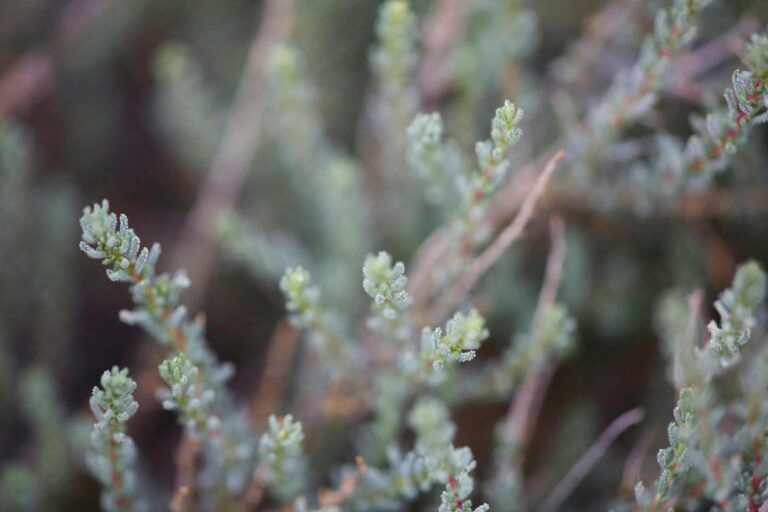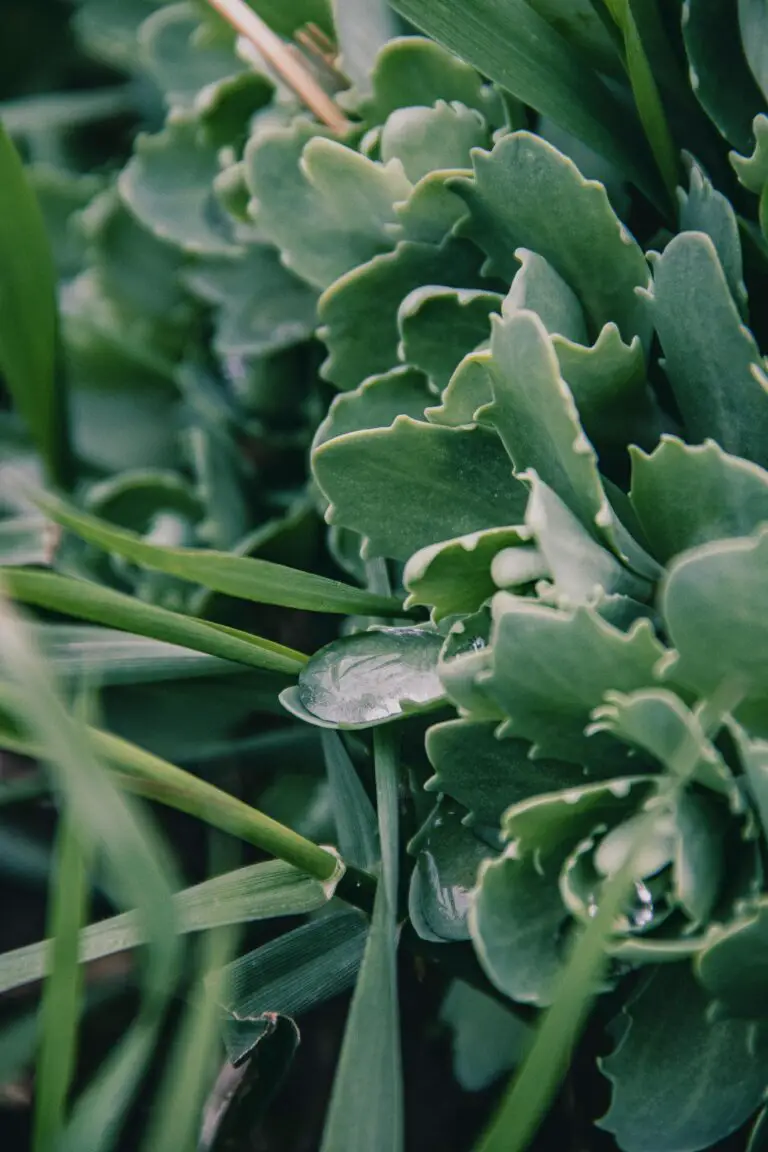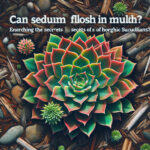Introduction to Sedum: A Succulent Marvel
Welcome to the captivating world of sedum! This resilient and charming succulent has carved out a special niche in the hearts of garden enthusiasts worldwide. Known for its drought-tolerant and hardy nature, sedum is the quintessential low-maintenance plant, perfect for those who adore greenery but lack the time for constant upkeep. Its easy-going temperament allows it to adapt and flourish in a myriad of environments, from the sun-kissed crevices of rock gardens to the shaded understories of towering oaks.
Imagine a plant that soaks up the sun like a lazy cat lounging on a windowsill yet braves dry spells like a seasoned desert traveler. Sedum, with its juicy leaves and vibrant blooms, is just that type of plant. It’s not fussy about its home—it can settle down in poor soil, grip onto the stony facade of a garden wall, or elegantly drape over the edge of a container. And the question on every gardener’s lips: will sedum spread in mulch? We’re about to unearth the secrets of sedum’s compatibility with this common garden element.
Among the sedum’s many marvels is its surprising ability to coexist with mulch. This may seem counterintuitive, given sedum’s succulent nature and mulch’s moisture-retaining properties, which could spell trouble for plants that dislike wet feet. However, sedum isn’t your typical succulent. It’s a warrior in the plant kingdom, equipped to handle the challenges that mulch might pose.

To tenderly care for your verdant friends, you might want to peek at our article on elevating your indoor garden. Discover how to nurture the sedum’s cousins and create an oasis that reverberates with the hum of life and the tranquil whispers of well-tended greenery.
So, let’s set the stage for a green spectacle as we dive into the idyllic and sometimes unexpected union of sedum and mulch. Stay tuned as we bring into focus the practical aspects and inside tips that will ensure your sedum not only survives but thrives amidst the cozy blanket of mulch, spreading its succulent charm throughout your garden.
Understanding Mulch and Its Benefits
Imagine a cozy blanket, but for your garden! That’s what mulch is like, a protective layer of material spread over soil like a comforting quilt. It comes in a myriad of costumes — organic options like wood chips, straw, and compost, as well as inorganic contenders like stones and rubber mulch. But the glitz and glamour of mulch aren’t just skin-deep; they’re game-changers in the plant-care universe!
Take soil moisture, our garden’s lifeline, mulch helps it stick around like a loyal friend, reducing the need for frequent watering. Not just that, but it’s also like nature’s thermostat, regulating soil temperature to keep plant roots in a happy zone, whether it’s a scorching summer or a chilly winter. And let’s not forget weeds — every gardener’s nemesis. Mulch steps up like a superhero, keeping those pesky invaders at bay.
For resilient beauties like sedums, which dazzle our gardens with minimal fuss, mulch can be a trusty sidekick. The regulating powers of mulch help these succulents thrive, so you might find them sprouting exuberantly, possibly even trying to spread their joy beyond their designated spots.
Dive deeper into the mulching magic with this video:
Interested in taking your gardening game to the next level with sedum? Check out the insightful piece on pruning your sedum and unravel smart gardening insights. It’s about time to think beyond the basic and elevate our green spaces with both sedum and mulch — a dynamic duo waiting to transform your garden narrative!
Sedum’s Compatibility with Mulch
If you’re an admirer of the resilient sedum plant, you might be contemplating whether these hardy succulents can buddy up with mulch in your garden. At first glance, one might worry that the snug blanket of mulch could be too much of a good thing for sedum, known for its preference for well-drained soils. Let’s dig a little deeper into this gardening conundrum!
Imagine a sedum plant, with its plump, juicy leaves and star-like blooms, settled atop a bed of mulch. You might think it’s only a matter of time before it succumbs to rot, given its distress signals when sitting in wet, boggy ground. However, sedum is a plant of many surprises. It’s like the adventurer of the plant kingdom—thriving where others might falter, even in a layer of mulch, provided it’s the right kind and applied with a thoughtful touch.
Think of mulch like a raincoat—too heavy, and you’ll overheat, but just the right kind keeps you dry without breaking a sweat. For sedum, chunky, coarse organic mulch is the garden garb of choice. It lets air and moisture weave through without soggy stagnation, warding off excessive moisture that could cause root rot.

Here’s where we draw inspiration from real-life applications. Consider the way gardeners in rock gardens or alpine beds use gravel or stone chips—they allow for splendid drainage while keeping the aesthetic value sky-high. Mulch of a similar demeanor—a bark mulch or straw perhaps—lets sedum stretch out without fear of damp shoes, so to speak.
Another point to bear in mind is the amount of mulch used. A thin layer, just a couple of inches thick, can discourage weeds (a common foe of gardeners everywhere) and help the soil retain moisture during those blazing summer days, all without suffocating sedum’s roots. Remember, this plant loves a drink now and then but never wants to sit in a puddle.
For those seeking more guidance on nurturing sedum and other succulents, dip into our insightful piece on tips for lush ground covers to fortify your green thumb arsenal. Sedum doesn’t demand beaucoup maintenance, but a nugget of wisdom here and there can go a long way in your gardening journey.
In short, don’t let the fear of mulch hold you back from exploring its partnership with sedum. With judicious choices and attentive care, sedum can not only get along with mulch but might even throw a garden party with blossoms aplenty. Just keep that mulch airy and light, and watch as your sedum takes delight.
Best Mulch Types for Sedum
Did you know that sedum plants, with their diverse and fascinating varieties, can transform your garden’s look while being incredibly low-maintenance? That’s right! These hardy succulents can add a splash of color to your outdoor space. But, to ensure they spread their textured leaves and star-shaped blooms far and wide, the right kind of mulch is key. Let’s explore the mulch varieties that give sedum the perfect boost.
Imagine a blanket that not only keeps your sedum cozy but also accentuates its natural beauty. Organic mulches such as bark or straw can serve as that comforting layer. Bark mulches, in particular, allow water and air to reach the soil, creating a perfectly balanced bed for sedum to thrive. A layer of straw might remind you of a rustic country setting, and it’s not just visually appealing—it’s fantastic for insulation and retaining moisture during those hot summer days.

Now, if you’re thinking of something a bit more modern and clean-looking, how about decorating your sedum with stones or gravel? This isn’t just for aesthetics; these inorganic options are champions at drainage. Sedum, being a succulent, loves a well-drained environment, and what better way to provide that than with gravel that ensures excess water has an easy escape route? Plus, the stones can absorb heat during the day and release it at night, giving your sedum that extra bit of warmth it enjoys.
While the classic organic and inorganic mulches are great, let’s not overlook the power of creativity. Have you seen gardens where the mulch itself is a work of art? You might stumble upon a sedum-tucked nook, with multicolored pebbles leading the way to what can only be described as a living tapestry. Sedum doesn’t ask for much, just a place to spread its roots, and with the right mulch, it can transform that spot into a natural mosaic.
Whether you’re dressing your garden up in a blanket of bark, crafting a canvas of straw, or laying down a bed of artistic pebbles, remember that the best mulch for your sedum is one that reflects your personal style while keeping the plant’s growth needs in mind. So, go ahead, give your sedums a mulch makeover and watch them flourish into an enchanting garden feature!
How to Mulch Around Sedum Plants
Let’s talk about how to pamper your sedum, that gritty survivor of the plant world, by mulching the right way. First things first, when you mulch around sedum plants, it’s about creating a comfy bed they’ll love without smothering them. Sedum plants are like those tough, independent characters in movies who only need a little support to thrive, and lucky for us, it’s a fairly straightforward tale.
Picture this: You’ve got your sedum plants firmly rooted in the ground, their fleshy leaves reaching for the sun. They’re set to spread their greenery across your garden bed, but they need a sidekick—that’s where mulch comes in. Applying mulch is like rolling out a red carpet for your plants, but you’ll need to do it with finesse. So, let’s dive into the step-by-step process:
- Choose the Right Mulch:
Before anything else, pick a mulch that complements sedum. Remember, sedum doesn’t like wet feet, so go for a coarse, well-draining material. Think chunky bark or gravel that lets air and moisture through without creating a soggy environment.
- Prep the Area:
Clear the space around your sedum of any weeds or debris. You want a blank canvas where the mulch can act as a protective layer, preventing weed invasions and conserving moisture without unwanted clutter.
- Apply With Care:
Start laying down the mulch in a thin layer. Circle around the base of your sedum, allowing a little breathing room between the stem and the mulch—think of it as avoiding a tight collar for optimal comfort. Pile it lightly, much like a fluffy duvet. A couple of inches of mulch will do the trick without suffocating your sedum.
- Spread Evenly:
With a gentle hand, spread the mulch evenly around the plant. The goal is to cover the soil, maintaining an even surface. It’s not about burying treasure; it’s about creating a uniform protective coat that shields without overwhelming.
- Water Wisely:
After mulching, give your plants a modest drink. Water the mulched area to settle it down and to anchor your sedum’s new protective layer. Remember though, sedum prefers to stay on the drier side, so this isn’t a time for a deep soak—just enough to say cheers to your newly mulched sedum.
Applying mulch to your sedum doesn’t just help it spread; it’s a statement. It tells your garden that you’re not just tossing some dirt around—you’re setting the stage for sedum to strut its stuff. And as these succulent beauties begin to thrive and spread under their mulch blanket, your garden becomes a living testament to your green thumb finesse.
Now, let’s get a bit visual, shall we? Below you will find a video that perfectly complements our chat about mulching around sedum. It’ll provide you with a moving picture of how to create the ideal conditions for your garden’s sedum story.
Remember, success in sedum mulching is found in the delicate balance of coverage and space. Let your mulch hug the ground, not choke it. With these steps, your sedum won’t just survive; it’ll spread into a thriving patchwork quilt of vibrant colors, textures, and life.
Propagating Sedum: Tips and Techniques
Are you looking to expand your sedum collection or just starting out with this versatile succulent? Well, you’re in luck! Propagating sedum is as rewarding as it is straightforward, even with a layer of mulch involved. Whether you’re diving into gardening headfirst or simply want to spruce up your space, sedum can be a lively addition with just a few simple steps. Let’s dig a little deeper, shall we?

First off, cuttings are the go-to for many garden enthusiasts when it comes to propagating sedum. Why? Because it’s practically foolproof! Imagine this: you snip a healthy stem, strip off the lower leaves, and voilà — you just wait for it to root. But here’s where the mulch comes in. A common question that emerges is: “Will sedum spread in mulch the same way it does in soil?” The answer is a resounding yes! Sedum cuttings can take root even when nestled in a blanket of mulch, though it’s wise to ensure contact with the soil beneath to kickstart the rooting process.
It’s All in the Technique
When using the cutting method, timing is everything. Choose a moment after a bloom when the plant is vigorous — early summer or late spring, perhaps. After placing your cuttings, remember to occasionally water them to maintain a degree of moisture, encouraging those tiny roots to emerge.
But what if you’re more of a ‘divide and conquer’ type? Sedum also propagates beautifully through division. This technique is like solving a plant puzzle: you take apart the parent plant into smaller sections, each with its own roots, and plant them separately. It may sound daunting, but it’s actually an excellent way to propagate mature plants, and the process isn’t hindered by the presence of mulch. In fact, as long as the divisions reach the nourishing soil below, the mulch can serve as a protective layer against harsh conditions, giving your new sedum plants the cozy start they need.
While the presence of mulch doesn’t deter the growth of sedum from either cuttings or divisions, keen attention to the mulch’s characteristics can enhance success rates. It’s about balance — too much moisture and your cuttings might rot, but too little, and they won’t root. A well-draining mulch, perhaps pine straw or shredded bark, is ideal for retaining just enough moisture without causing soggy conditions.
Picturing a lush, green carpet of sedum weaving through the garden? It’s within reach, thanks to these propagation methods. Whether it’s that scorching sidewalk strip or a serene garden corner, walking past your thriving sedum will be a small daily triumph, a living example of your green-thumbed capabilities. And to think, it all started with a little cutting, division, and the magic of mulch!
Common Challenges in Growing Sedum in Mulch
Growing sedum, with its lush rosettes and cascading varieties, amidst a bed of mulch can sometimes feel like you’re navigating a horticultural obstacle course. But fear not! With a keen eye and some savvy care tips, your resilient greens can flourish even in the trickiest of mulch setups.

Let’s sink our gloves into the common hurdles gardeners might face. First up, overwatering – the bane of many succulent growers. Think of sedum as the camels of the plant world; they store water in their leaves and dislike soggy feet. When paired with mulch, which retains moisture, it’s a delicate balance to keep your sedum quenched but not drenched. Monitor the moisture level like a hawk, and remember that less is often more when it comes to watering these hardy specimens.
Warding Off Disease and Decay
A less visible but equally critical issue is the specter of disease, which can lurk beneath the surface of your mulch. Sedum can sometimes fall prey to fungal foes, especially if the mulch keeps the soil too moist for too long. To dodge this, go for coarse, airy mulch types that promote good airflow, and steer clear of the siren call of overly dense organic matter that might retain too much moisture.
Have you ever watched your beloved sedum slowly wither, confounded by what you may have done wrong? Often, the culprit is decay, which can creep in when mulch is piled on too thickly or too close to the plant’s base. Ensure your mulch layer is like a blanket – comforting but not smothering. Allow your sedum space to breathe, and they’ll reward you with robust growth.
With preemptive measures and solutions at the ready, your garden encounters with sedum should be far from prickly affairs. Implement proper watering techniques, select the right mulch, and watch for early signs of disease. With these strategies, you’ll be on your way to mastering the art of growing sedum in mulch, one vibrant leaf at a time.
Maximizing Sedum’s Spread in a Mulched Landscape
For those enchanted by the resilient beauty of sedum, you might wonder if its spreading charm can flourish midst the soft embrace of mulch. The good news is yes, sedum can spread in mulch and even thrive, with the right approach to planting and care! Let’s dig into some earthy wisdom to coax the best from these hardy ground-huggers.
Deliberate Spacing: A Game of Inches
The secret to getting your sedum to spread through your mulched beds lies initially in its planting. Think of sedum spreads akin to a social butterfly — give each plant enough room to jive! Spacing them too closely can turn the party into a crowded room where no one can dance. Start with about six inches to a foot between each plant, depending on the sedum species. This spacing algorithm ensures each sedum has enough real estate to expand without hindrance. Imagine a tapestry interwoven with vibrant foliage, reaching out to its neighbors to shake hands underground.
Unearthing the Perfect Planting Depth
Now, let’s burrow down into planting depth. Sedum is not a prima donna; it doesn’t require royal treatment. Simple is key — nestle the root ball just so that it sits level with the soil surface under the mulch. No deep trenches, please! A snug fit into the top layer of soil gives your sedum the ideal launchpad to spread its roots and shoots, anchoring itself firmly like a seasoned sailor amidst rolling waves of mulch.
Check out this video for inspiration on the wonders possible with ground covering perennials!
Cultivating a Maintenance Rhythm
With your sedum comfortably in place, maintenance becomes your gentle drumbeat to encourage flourishing spreads. Water them thoughtfully, especially during the initial establishment phase and the sweltering spells of summer. As sedums are drought-tolerant once they’re established, it’s crucial not to overwater and cause a marshy mess. Unwanted moisture could stifle your sedum’s spirit to conquer new mulchy territories!
Regular yet restrained is the mantra for fertilizing. Sedum doesn’t crave sumptuous feasts of fertilizers. A light sprinkle of balanced, slow-release fertilizer at the start of the growing season will suffice — no more no less. This nutrient nudge gives your plucky plants enough oomph to spread their wings (or leaves, I should say!) without going overboard.
The trickiest part? Weeding. Be as vigilant as a hawk surveying its domain! Keep those pesky plant invaders at bay to prevent them from hijacking the space your sedum needs to spread. It’s not about being obsessively manicured but maintaining a haven where sedum can thrive uninhibited, like a jazz artist freely riffing on a clear stage.
Embrace these strategies, sprinkle them with a touch of patience, and watch your sedum make itself at home, spreading with vivacity in your mulched masterpiece!
Frequently Asked Questions
So you’ve mulched your garden and are wondering, “Will sedum spread in all this mulch?” Let me walk you through some real-life gardener insights that just might surprise you.
Will My Sedum Still Spread Even If I’ve Mulched Heavily?
Avid gardeners know this all-too-well: sedum plants are tenacious! Even when you think you’ve got them snug under a cozy blanket of mulch, they tend to emerge like resilient little warriors. The reality is, sedum can spread in mulch, especially if you provide the right conditions. A thin layer that doesn’t smother the plant can actually be beneficial, keeping moisture in and weeds out.

How Can I Ensure My Sedum Thrives in Mulched Areas?
Imagine this: sedum creeping through your garden’s nooks and crannies, painting a lush tapestry amidst the mulch. To see this happen, ensure the soil is well-draining and the mulch isn’t too thick around the sedum. Remember, they love the sun, so place them where they can bask in the golden rays. A little love goes a long way!
What Kind of Mulch Is Best for Encouraging Sedum to Spread?
Think of your sedum as a connoisseur of fine dining; it prefers a certain type of mulch. Organic mulches that break down over time, such as straw or leaf mold, are like a gourmet meal that enriches the soil as they decompose. Your sedum will reward you by spreading out, seeking the nutrients from the decomposing mulch as if saying, “Thanks for the treat!”
Can Mulch Prevent Pests That Might Hinder Sedum Growth?
Sedum plants aren’t just spreading; they’re on a covert mission to ward off unwanted guests. With the aid of a layer of mulch, they can keep soil-borne pests at bay, ensuring those plucky leaves and stems have a clear path to spread their joy. Think of mulch as the secret service to your sedum’s president, offering protection while it focuses on growth.
Is There a Chance My Sedum Could Spread Too Much?
Oh yes, sedum isn’t shy when it comes to stretching out. If you’re not careful, you might find it gate-crashing other plant territories in your garden. It’s like having an eager puppy that wants to play everywhere; you need to set some boundaries. If you notice your sedum invading other spaces, don’t hesitate to trim the spreaders back. After all, good neighbors respect each other’s space.



